radioactive
Latest
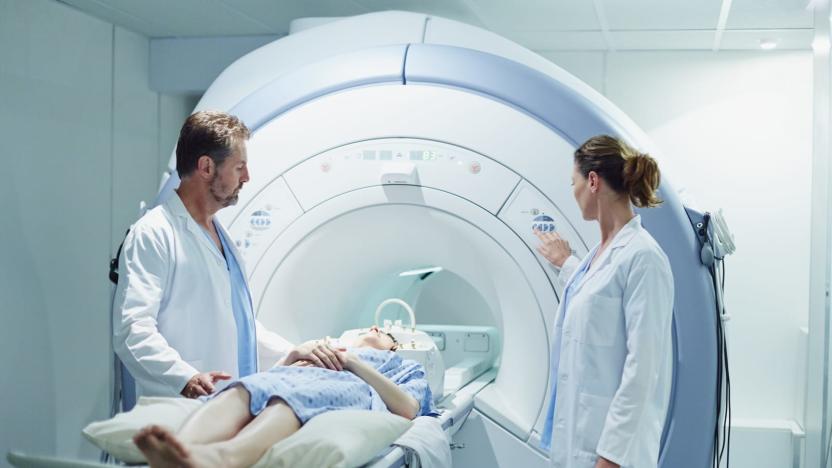
Wisconsin firms hope to make radioactive isotopes for nuclear medicine (updated)
Certain cardiac stress tests and other nuclear medicine diagnostics depend on molybdenum-99, or Mo-99, a radioactive isotope that decays into the diagnostic imaging agent technetium 99m, or Tc-99m. The latter is used in more than 40 million medical imaging procedures each year, but Mo-99 is costly and difficult to make. Now, two Wisconsin firms say they've found a more efficient way to make the critical material.
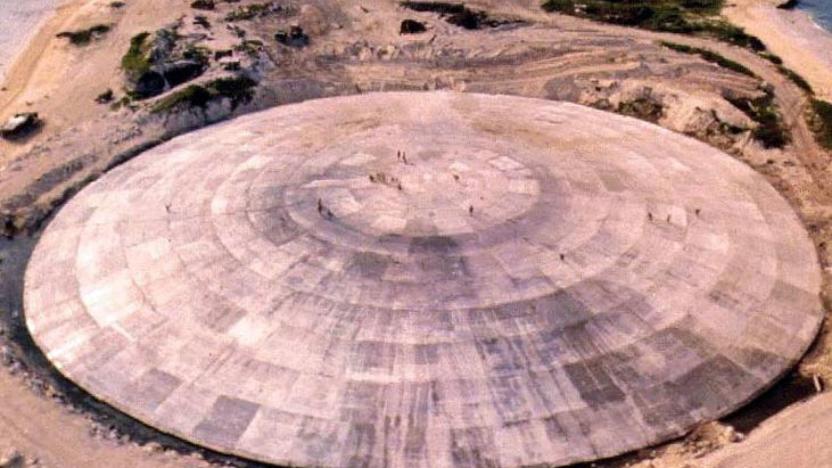
UN chief warns nuclear waste could be leaking into the Pacific
A UN chief is concerned that a Cold War-era nuclear 'coffin' could be leaking radioactive material into the Pacific. The concerns are both alarming and oddly similar to the plot of Shin Godzilla -- including the part about it being the US's fault.

Amazon backs Marie Curie biopic starring Rosamund Pike
Amazon's latest Prime Video production won't just rely on star power to reel you in -- it should also appeal to science fans. The internet giant is teaming with France's Studiocanal on Radioactive, a biopic covering the work and romance of pioneering radioactivity scientist Marie Curie (and by extension, Pierre Curie). Produced by Persepolis' Marjane Satrapi, it's the adaptation of Lauren Redniss' graphic novel Radioactive and will star Gone Girl's Rosamund Pike. The star of the show may be the science itself, however.
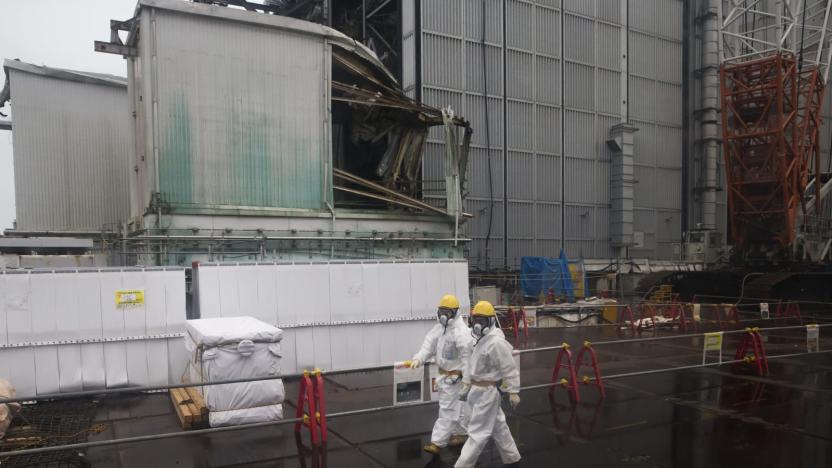
Japan has delayed the Fukushima nuclear plant cleanup again
There's been another delay in the plan to clean up the Fukushima nuclear plant. The Japan Times reported today that the country's government approved another revision to the cleanup schedule that will push removal of radioactive fuel rods from reactor Units 1 and 2 three years further down the road. This latest delay, which is due to newly uncovered damage in the storage pools, means that the cleanup is now six years behind schedule.
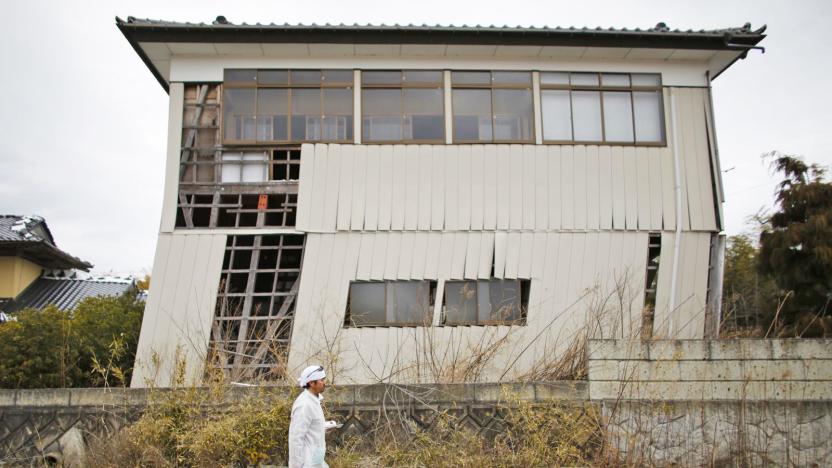
Study says Fukushima region is safe enough for people to return
Fukushima's ill-fated nuclear power plant may still be so dangerous that it kills robots, but residents are trickling back as officials decide that radiation levels are safe in some areas. But are they safe enough that you'd never have to worry about long-term effects? According to two researchers, the answer is yes. They've published a study indicating that the cesium radiation levels in Date, 37 miles away from the Fukushima plant, have dropped so quickly (60 percent just between 2011 and 2013) that residents shouldn't suffer any harm. In fact, they may be safer than usual. The median lifetime radiation dose (18 millisieverts) should be less than what you typically receive just by living on Earth.

Fukushima nuclear reactor will get mapped with subatomic particles
Scientists from Los Alamos National Lab have discovered how to look through and map just about anything with a new process: the science-fictionally sounding muon tomography. Even in places like the highly radioactive Fukushima reactor, the method doesn't require any disassembly or any need for x-rays or ultrasound. Instead it logs the movement of muons (of course), a radioactive subatomic particle that exists, well, everywhere. Two giant aluminum sides are put either side of whatever needs looking into, and the system measures the trajectory of these muon particles. From this, the scientists are able sketch the object, given enough of the tiny things.

Japan is building a huge 'ice wall' to block Fukushima's fallout water
No one can blame Tokyo Electric Power Co. (TEPCO) for the earthquake and tsunami that wrecked its Fukushima nuclear plant in 2011. Since then, however, the company has been accused of having a "weak sense of crisis" in responding to the accident's many knock-on effects. This includes the leakage of contaminated groundwater that passes under the damaged plant and into the Pacific Ocean -- something that is happening right now at a rate of 400 tons per day. This week, after more than a year of back and forth, TEPCO has finally managed to get the Japanese nuclear regulator's approval to create a massive wall of frozen soil to hold the groundwater back.

MIT designs a floating, tsunami-proof nuclear plant
What's the safest place to put a nuclear reactor? Offshore, apparently. A new power plant design concept from MIT envisions a facility built on floating platforms, moored in deep water several miles off the coast. This, the concept's creators explain, lends it several crucial advantages -- making it virtually immune to earthquakes, tsunamis and meltdowns. Big promises, to be sure, but the professors' reasoning actually makes sense: in deep water, tsunami waves aren't large enough to cause significant damage, and earthquakes are usually only felt if you're standing on the earth. Floating the reactor on the ocean also gives the plant access to easy, passive cooling, what MIT's Jacopo Buongiorno calls an "infinite heat sink."
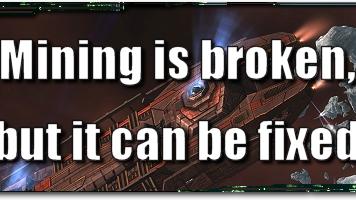
EVE Evolved: Mining is broken, but it can be fixed
Mining has a reputation for being the most boring activity in EVE Online, but it's always filled a niche role as a low-effort way to make ISK and play with friends casually. When there's no PvP going on and you can't give your full attention to smashing NPCs in missions or anomalies, mining fills that downtime with something more lucrative and social than spinning your ship in a station. The problem is that mining has slowly become obsolete over the years; alternative mineral sources now supply much of the market's needs, and the risk of flying a defenseless barge just isn't worth the mediocre payout. It's currently more efficient for an individual to buy minerals with ISK made via some other form of PvE, such as level 4 missions or incursions. And on the macroscopic level, such huge quantities of minerals hit the market from alternative sources such as reprocessing loot that the economy could potentially function with no miners at all. CCP has tried to make mining more appealing over the years with buffs and new ships, and the devs recently announced plans to nerf mineral compression as part of a campaign to make mining worthwhile, but I think it'll take a lot more than ISK to get people mining again. In this week's EVE Evolved, I look at how mining and reprocessing are at odds and suggest some ideas for new mining features that could revitalise this long forgotten profession.

Radioactive Orchestra 2.0 takes the music live, makes sweet photonic melodies (video)
Sweden's Kollektivet Livet took a step towards demystifying the invisible energy around us last year through its Radioactive Orchestra, which turned isotopes into beats and beeps. To our relief, the Orchestra isn't content to record in the studio. Version 2.0 of the music project is all about going on tour, so to speak, through live instruments: in a first prototype, a photon detector translates every radiation hit from nearby materials into its own audio pulse. The invention results in an imprecise art based on distance, but aspiring cesium rock stars can tweak the sensitivity or transpose the notes to generate their own distinct tunes. Orchestra manager Georg Herlitz tells us that the initial setup you see here, played at TEDx Gotëborg, is just a "sneak peek" of both a finished instrument and more work to come. We might just line up for the eventual concerts if the performance video after the break (at the 11:00 mark) is any indication.

Alt-week 8.11.12: Robo-billies, quasicrystals and radioactive art
Alt-week peels back the covers on some of the more curious sci-tech stories from the last seven days. It's not like we're trying to out-weird ourselves, it just, somehow, keeps happening. At least one of this week's offerings (we'll leave it to you to figure out which) will possibly be the creepiest thing we post all year. As for the rest, well it's slightly more palatable. We'll get uncharacteristically pumped about cycling, meet some extra-terrestrial quasicrystals and enjoy some art with X-men credentials. This is alt-week.

Scientists bend gamma rays, could neuter radioactive waste (update: more credit)
Bending most light is easy; bending it in gamma ray form, however, has often been deemed impossible given how hard it is for electrons to react to the extreme frequencies. LMU Munich scientist Dietrich Habs and his Institut Laue-Langevin teammate Michael Jentschel have proven that assumption wrong: an experiment in blasting a silicon prism has shown that gamma rays will refract just slightly through the right material. If a lens is made out of a large-atom substance like gold to bend the rays further, the researchers envision focused beams of energy that could either detect radioactive material or even make it inert by wiping off neutrons and protons. In theory, it could turn a nuclear power plant's waste harmless. A practical use of the technology is still some distance off -- but that it's even within sight at all just feels like a breakthrough. Update: The research also involved the Max Planck Institute of Quantum Optics' Marc Günther. Thank you, Dr. Günther.

Cyberdyne turns its HAL exoskeleton into an anti-radiation suit
The original Hybrid Assistive Limb (HAL) suit was designed to help those with muscle diseases, but it's now been upgraded to cope with a very different type of problem: handling radioactive substances. One of the few wearable materials that can stop radiation is tungsten, which is extremely heavy: a typical tungsten vest weigh up to 132 pounds. When worn in conjunction with a HAL exoskeleton, however, a vest can be worn for lengthy periods without causing fatigue -- potentially allowing greater access to hazardous sites like Fukushima.

Electrified bacteria army kills uranium, gives Captain Planet a run for his money
A certain type of "hairy" bacteria may just be the answer to cleaning up radioactive spills. Scientists at the University of Southern California found that under certain circumstances, Geobacter sulfurreducens could make metals like uranium less soluble -- essentially turning the metal into hard droplets rather than being absorbed. Researchers discovered that by lowering the bacteria's temperature, it caused hair-like pili to extend, which enveloped the poison uranium and ultimately reduced it through long-range electron transfer. The breakthrough could help deplete sources of uranium or other radioactive isotopes where bacteria normally can't survive -- like from the Fukushima nuclear plant that devastated Japan earlier this year. Scientists believe they've only scratched the surface with this development and are optimistic about the future of bacteria "electromicrobiology," which we can only guess grew in popularity after this '80s classic hit the airwaves (video after the break).

Periodic Table welcomes two new, ultraheavy elements, jury still out on the names
If you bump in to the Periodic Table of Elements today, be sure to give it a hearty Mazel Tov, because it's just welcomed two new members to the family. Yesterday, the International Union of Pure and Applied Chemistry (IUPAC) officially recognized elements 114 and 116, crediting the discovery to scientists from Russia's Joint Institute for Nuclear Research and the Lawrence Livermore National Laboratory, in California. Boasting atomic masses of 289 and 292, respectively, the new man-made additions are now the heaviest elements on record, seizing the belt from copernicium (285) and roentgenium (272). As with most heavyweights, however, both decay within less than a second, making it difficult for researchers to get a grasp of their chemical properties. Nevertheless, both apparently had enough credibility to survive IUPAC's three-year review process, paving the way for the real fun to begin. At the moment, 114 and 116 are known, rather coldly, as ununquadium and ununhexium, respectively, though their names will eventually be jazzed up -- sort of. The Russian team has already proposed flerovium for 114 (after Soviet nuclear physicist Georgy Flyorov), and, for 116, the Moscow-inspired moscovium, which sounds more like an after shave for particularly macho chemists. IUPAC will have the final say on the matter, though one committee member said any proposed names are likely to be approved, as long as "it's not something too weird." Head past the break for a full, and somewhat obtuse PR.

Visualized: xkcd explains radiation
This radiation infographic is too small to read. There's a reason for that. Technically, it's because we constrain images to 600 pixels wide. Stylistically, it's because we'd like to point out that all things are relative. Head on over to xkcd to see just how much ionizing radiation you're likely to be exposed to performing radioactive activities (or just sitting still) and how that compares to the amount that researchers presently believe is capable of having an ill effect. Then, decide whether you should enlarge or reduce the size of your tinfoil hat accordingly. [Thanks to everyone who sent this in]

S.T.A.L.K.E.R. studio possibly considering MMO
S.T.A.L.K.E.R.: Shadow of Chernobyl was an FPS released last year by GSC Game World, based in the Ukraine. At a press conference concerning its upcoming sequel, Clear Sky, GSC's PR head Oleg Yavorsky said that the team is "considering" creating an MMO from the franchise.While nothing is definite yet, and Yavorsky has admitted to needing to confer with someone with more experience in MMO development, would the S.T.A.L.K.E.R. series make a good MMO? A post-apocalyptic/radioactive wasteland setting could be interesting but limited. Character advancement through collection of items would work well as an MMO mechanic. There are various factions in the original game that could offer enticing classes. And the Anomalies -- areas where the laws of physics are bent askew -- might be a fun way to innovate. Let's hope to hear something before too long.

Radioactive gases in plasma displays? Not so much.
Here's a twist on the "Nigerian scam." A Nigerian newspaper is reporting that the manager of LG's Nigerian branch, a Mr. Tae-Joon Park, said plasma sets "...have short life spans because of the radioactive half-life of the gases they use." We couldn't make this up -- go ahead and follow the read links for yourself. Sounds like Mr. Park got the brightness "half life" mixed up with radioactive "half life." We're sure all EHD readers know that there's absolutely no truth to this, but we'll clarify: plasmas are filled with xenon and neon. And as we remember from high school chemistry, those are "noble," inert gases. No radioactivity here, and no amount of sitting in front of our plasmas will grow that third arm we need to complete our "snacks, drink, remote" trifecta!









